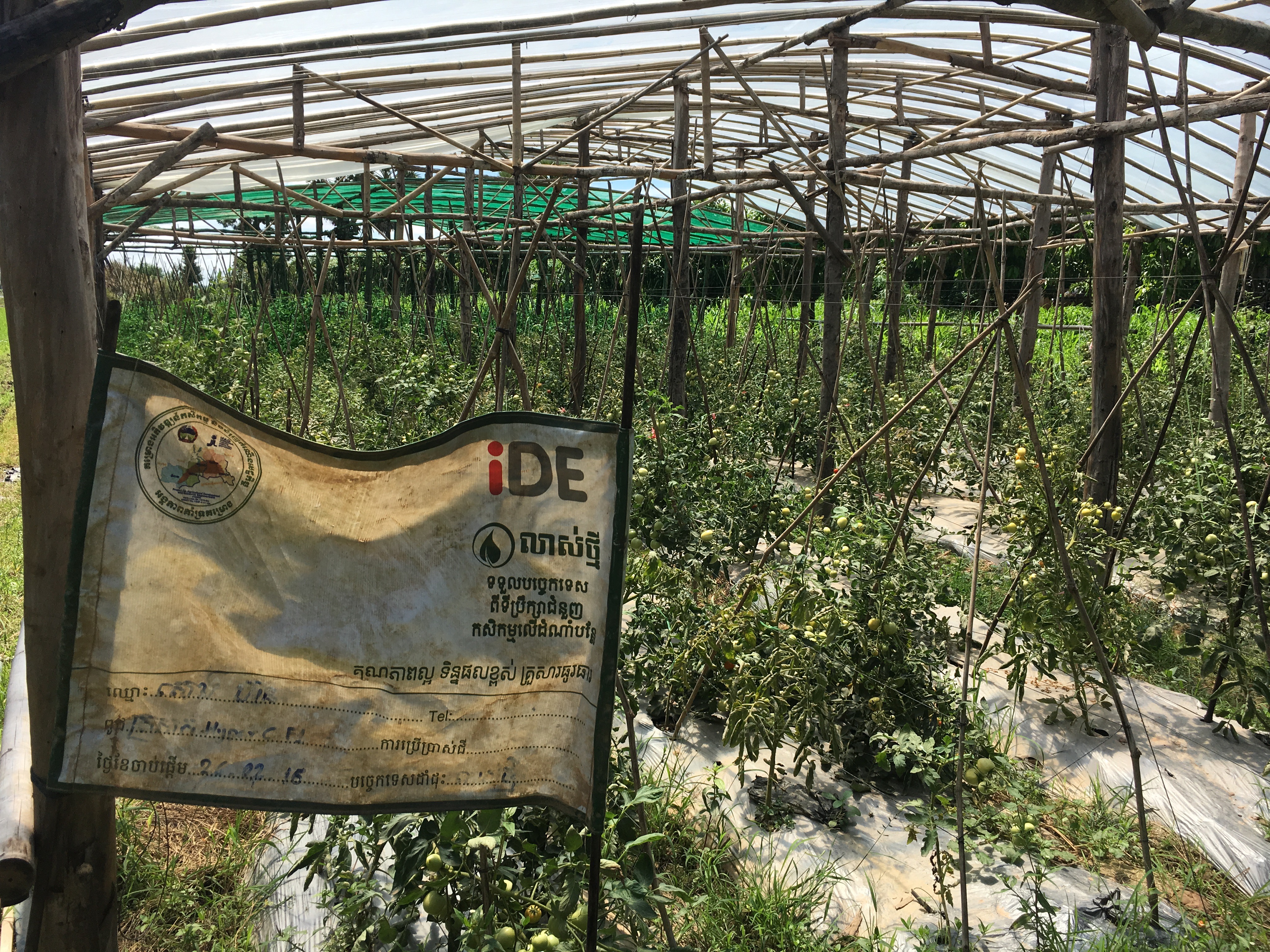Visiting a Greenhouse
 |
| Tomatoes in the greenhouse. They were tasty :) |
Lors Thmey is conducting a project with a Canadian NGO testing an open greenhouse concept to enhance yield with a drip irrigation system. I visited that greenhouse on 10/6/16 (my birthday :) and wanted to write up some details from that visit.
They are testing the greenhouses in four different locations. Prior to visiting the greenhouse pictured above, I helped picked Chinese Kale to transplant into another greenhouse. The greenhouse in this post was growing tomatoes on a 15 m x 45 m plot. The trial centers around testing three different coverings: a plastic, a green mesh, and an open sky. You can see the different coverings in the picture above. I won't go into detail regarding the outcome of the trial, but I can say the green mesh seems to be the winner.
This post will be centered on the production of various plants and how that relates to the payback for the greenhouse concept. This season, this particular plot produced only 300 kg (about 0.44 kg per square meter), which is dramatically less than the 4-6 kg per square meter possible for tomatoes in a season. I was told the lesser yield was due to the inexperience of the farmer. This was the first time he had used techniques like drip irrigation. Tomatoes can be sold for 3000 riel, (US$0.75) per kg. That means that the plot produced $225 worth of tomatoes, while the plot could have produced US$2,000 - 3,000 worth of tomatoes during the season.
Across the four greenhouse locations in the trial, the cost for the labor, roof material, drip lines, plastic mulch, seeds, and fertilizer averaged to be $1,600. That means that if the farmer could achieve a 4 kg per square meter yield, the greenhouse could have a payback of one growing season.
Many of the durable components like the wood structure, plastic mulch, covering, and drip lines will last up to 10 cycles until replacement. I don't yet know how many cycles occur during a season, so I will need to investigate a bit more to calculate the total return on the system.
The table below shows the yield for various vegetables over the course of the season (several growing cycles), the price during the wet season, and the total value reaped during the wet season.
| Name | Yield (kg/sqm) | Price (US$/kg) | Value (US$) |
| Tomato | 4 - 6 | 0.75 | 2,000 - 3,000 |
| Chinese Kale | 5 - 6 | 1 | 4,000 |
| Cucumber | 5 - 10 | 0.30 | 1,000 - 2,0000 |
| Bitter gourd | 5 - 10 | 0.5 | 1,700 - 3,400 |
Throughout the year, prices can vary depending on supply and demand. Chinese kale, for example, can fetch $2- 3 per kg during the dry season, while the price for cucumber can drop to $0.025 per kg when supply outpaces demand.
Based on this information above, the greenhouse seems like a compelling growing technique. I am yet unsure as to the challenges with deploying this approach. My guess is that the two main challenges are the upfront cost and the learning curve farmers must climb to use this technology.
There are a few details that I would still like to flesh out.
- How many growing cycles occur during the wet and dry season?
- What are the reoccurring costs of non-durable materials like seeds and fertilizer?
- What is the yield during the dry season?
- Learn in more detail why the farmer acheive such a small yield.
- What is the name of Canadian NGO working on the project?
- What are the details of the project?

